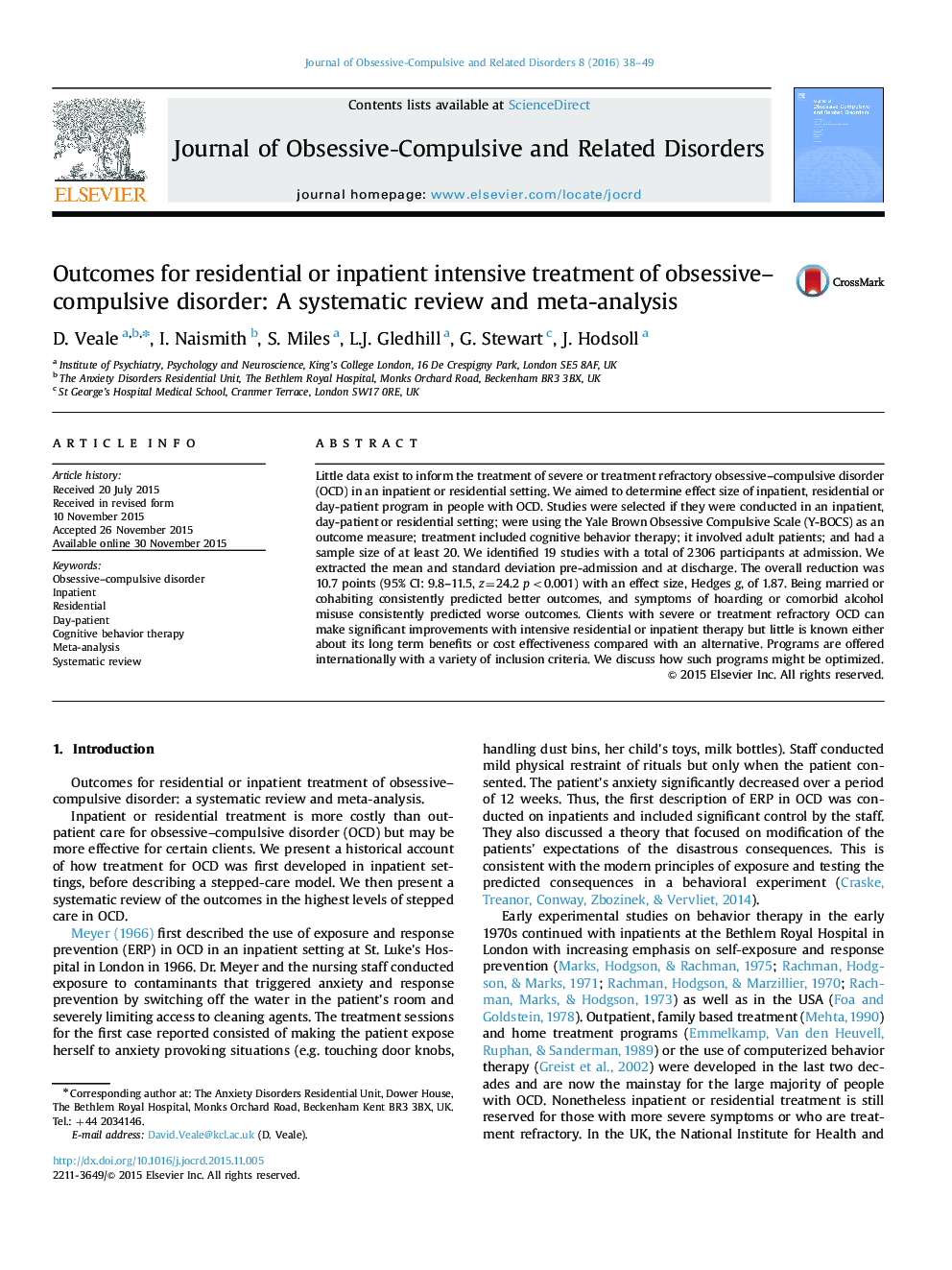| Article ID | Journal | Published Year | Pages | File Type |
|---|---|---|---|---|
| 7269164 | Journal of Obsessive-Compulsive and Related Disorders | 2016 | 12 Pages |
Abstract
Little data exist to inform the treatment of severe or treatment refractory obsessive-compulsive disorder (OCD) in an inpatient or residential setting. We aimed to determine effect size of inpatient, residential or day-patient program in people with OCD. Studies were selected if they were conducted in an inpatient, day-patient or residential setting; were using the Yale Brown Obsessive Compulsive Scale (Y-BOCS) as an outcome measure; treatment included cognitive behavior therapy; it involved adult patients; and had a sample size of at least 20. We identified 19 studies with a total of 2306 participants at admission. We extracted the mean and standard deviation pre-admission and at discharge. The overall reduction was 10.7 points (95% CI: 9.8-11.5, z=24.2 p<0.001) with an effect size, Hedges g, of 1.87. Being married or cohabiting consistently predicted better outcomes, and symptoms of hoarding or comorbid alcohol misuse consistently predicted worse outcomes. Clients with severe or treatment refractory OCD can make significant improvements with intensive residential or inpatient therapy but little is known either about its long term benefits or cost effectiveness compared with an alternative. Programs are offered internationally with a variety of inclusion criteria. We discuss how such programs might be optimized.
Keywords
Related Topics
Health Sciences
Medicine and Dentistry
Psychiatry and Mental Health
Authors
D. Veale, I. Naismith, S. Miles, L.J. Gledhill, G. Stewart, J. Hodsoll,
